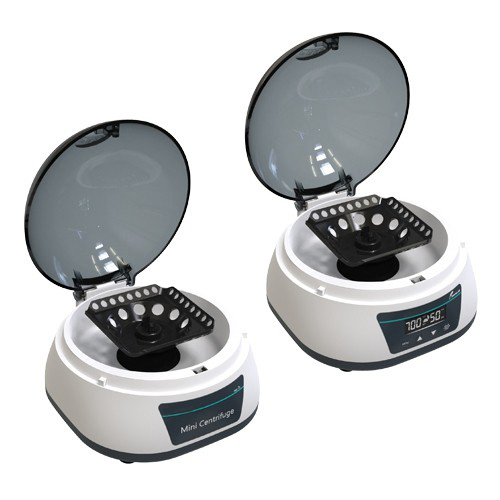When selecting a centrifuge, how can we ensure that we choose the most suitable model?
01 – Centrifuge: Rotational Speed
Desktop centrifuges are categorized based on their maximum rotational speed (the speed when unloaded) into low-speed centrifuges (<8000 rpm/min), medium-speed centrifuges (8000-15000 rpm/min), high-speed centrifuges (15000-30000 rpm/min), and ultrahigh-speed centrifuges (>30000 rpm/min). Each centrifuge has a rated maximum rotational speed.
02 – Centrifuge: Rotor
The rotor is the primary working component of a centrifuge, with a complete set of rotors sometimes costing more than the centrifuge itself. The variety and specifications of rotors available also reflect the manufacturer’s technical proficiency in centrifuge production. Common rotor types include fixed-angle rotors and horizontal rotors, as well as zonal rotors, continuous flow rotors, and vertical rotors.
- Fixed-Angle Rotor: Sample tubes are fixed at a constant angle to the rotation axis, causing sedimentation to concentrate at the bottom and near the bottom side of the tube.
- Horizontal Rotor: During operation, buckets and tubes remain horizontal, perpendicular to the rotation axis, resulting in sedimentation at the bottom of the tube.
Choose a horizontal rotor if you want samples to collect at the bottom of the tube, and a fixed-angle rotor if you prefer samples to concentrate at the bottom and the adjacent side wall.
03 – Centrifuge: Capacity
The number of sample tubes needed for each run and the capacity required per tube dictate a centrifuge’s total capacity. Simply put, the total capacity of a centrifuge equals the capacity of each tube multiplied by the number of tubes. Total capacity should match the scale of work.
04 – Centrifuge: Temperature Control
General laboratory centrifuges come with either low temperature control or ambient temperature options, but models exceeding 18000 r/min typically feature low temperature control. This low temperature control often employs a single-stage compressor with fluorine-free refrigeration, with temperature control ranging from -9℃ to -40℃ or -20℃ to 40℃, and precision within ≤1℃. Features like pre-cooling, maintaining a constant cold state during standby, cater to laboratories’ flexible and continuous operation needs. For samples like proteins or cells that degrade at high temperatures, a refrigerated centrifuge is necessary.
05 – Centrifuge: Control System
Desktop laboratory centrifuges now employ microcomputer control systems that not only ensure safe operation but also automate task completion. Many modern centrifuges feature user-friendly controls, such as rotor recognition, safety lock, automatic balancing, error alerts, acceleration and deceleration profiles, among others.


